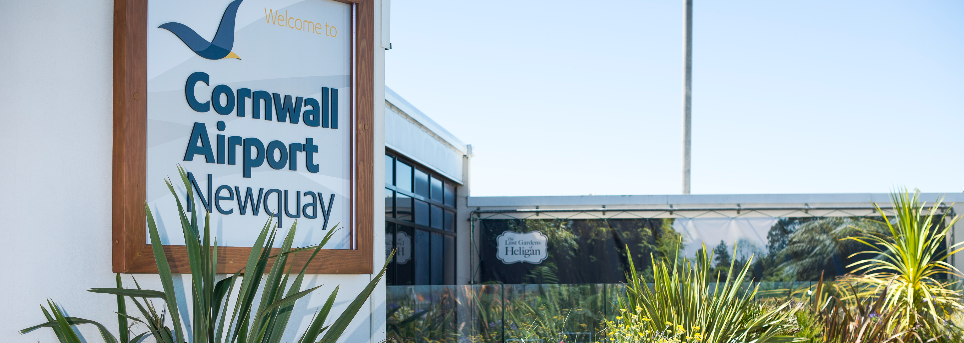The challenge
Cornwall Airport Newquay, a vital gateway to the South West of England, is committed to providing a seamless and positive experience for its passengers. With ambitions for growth and a desire to maintain high service standards, Newquay recognised the need for a comprehensive understanding of its current operational capacities and potential bottlenecks, particularly looking ahead to future flight schedules (Summer 2028).
The airport sought to quantitatively assess key passenger processing areas – including check-in, central security search, departure lounge and gate operations, and arrivals (immigration and reclaim hall). The core challenge was to identify current performance limitations, accurately forecast future demand impacts, and determine the optimal infrastructure and resource allocation required to meet IATA Level of Service (LoS) targets and ensure continued operational efficiency. Newquay needed data-driven insights to make informed decisions about potential investments and operational adjustments.
The solution
Cornwall Airport Newquay asked AiQ, specialists in airport analytics and operational efficiency, to conduct an in-depth capacity and demand assessment across its terminal operations. AiQ employed its bespoke airport modelling tools, including TvA Delta for check-in analysis and TransvisionAiR™ for arrivals, alongside robust analytical methodologies.
The comprehensive study involved:
Baseline and Future Scenario Modelling: AiQ analysed passenger flows based on current (Summer 2024) and projected future (Summer 2028) flight schedules, focusing on representative busy day scenarios (e.g., Saturday).
Constrained vs. Unconstrained Analysis:
Capacity Analysis (Constrained Model): Assessed current infrastructure performance, identifying existing queue lengths, waiting times, and space utilisation (e.g., 8 check-in desks, 1 security lane, current immigration setup).
Demand Analysis (Unconstrained Model): Determined the ideal infrastructure and resource requirements needed to meet IATA LoS targets (e.g., 10-minute maximum wait time at check-in) under current and future demand.
SLA Assessment:
Check-In: Evaluated desk utilisation, queue lengths, waiting times, and required area, considering a transaction time of 120 seconds per passenger.
Central Security Search: Modelled passenger flow, queue lengths, and waiting times with the existing single-lane setup and assessed the impact of a potential second lane.
Departure Lounge and Gates: Assessed International Departure Lounge (IDL) population dynamics, gate requirements (number and capacity), and pre-boarding/boarding timings.
Arrivals: Analysed immigration queue lengths, waiting times (with 2 desks), and reclaim hall passenger population.
This multi-faceted approach provided the airport with a clear, quantified understanding of its operational pinch points and future needs.
The benefits
- Evidence-Based Decision Making
- Future-Proofing Operations
- Optimised Resource Allocation
- Strategic Investment Guidance
- Improved Operational Efficiency
The collaborative assessment delivered by AiQ provided Cornwall Airport Newquay with actionable insights and a robust foundation for strategic planning and operational enhancements:
Evidence-Based Decision Making: Newquay received clear, data-driven recommendations. For instance, the Summer 2024 check-in analysis showed current operations could lead to a breach in acceptable service levels, the analysis also showed additional desks would be needed.
Future-Proofing Operations: The Summer 2028 analysis highlighted future challenges and requirements. For example:
Security: With a single lane, Summer 2028 demand could result in exponential wait times. The addition of a second lane was shown to significantly reduce this, clearly justifying potential investment.
Arrivals Immigration: The study indicated that the current two immigration desks would lead to significant queues suggesting a need for more than 2 desks to meet target wait times.
Departure Lounge & Gates: Peak IDL population for Summer 2028 was projected at 484 passengers, with gate requirements showing a need for 4 gates, with some able to hold up to 170 passengers for larger aircraft.
Optimised Resource Allocation: The findings allow Newquay to make informed decisions about staffing, desk/lane openings, and space utilisation to better match capacity with demand throughout the day. For example, operational management of check-in desk allocation was highlighted as crucial during peak operating hours.
Strategic Investment Guidance: The study provides a clear rationale for future capital expenditure, ensuring investments are targeted where they will deliver the most significant improvements in capacity and service levels.
Improved Operational Efficiency: Understanding detailed passenger flow dynamics and processing times enables the airport to refine its operations for greater efficiency and throughput.
By leveraging AiQ’s expertise and advanced modelling capabilities, Cornwall Airport Newquay is now better equipped to manage its current operations effectively and strategically plan for future growth, ensuring a continued focus on passenger satisfaction and operational excellence.
Our award winning team of operational and analytical experts are dedicated to analysing, modelling and optimising every aspect of an airport. Specialising in airport capacity, we are trusted to realise capacity and solve complex operational challenges. For more information about how we can assist you with any of your challenges in 2025 and beyond, contact us today.

